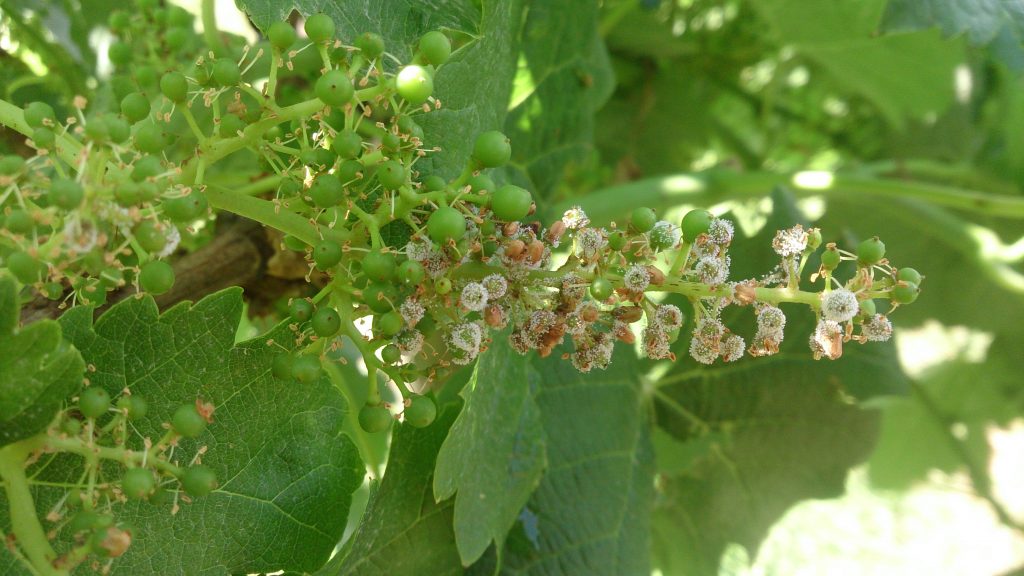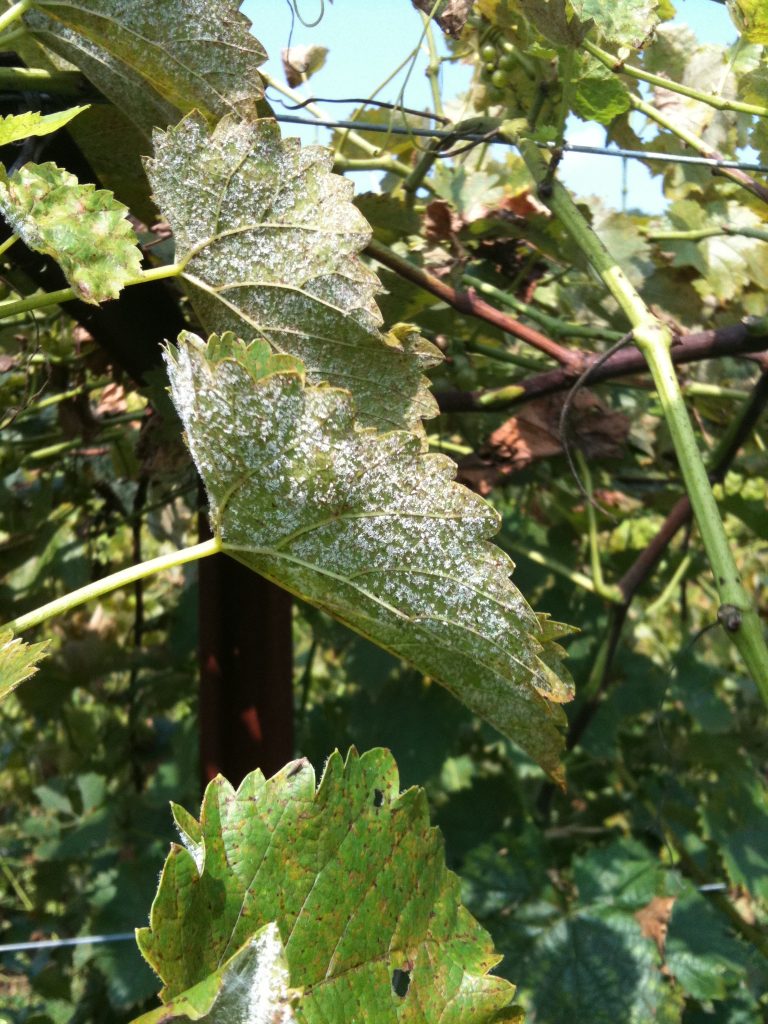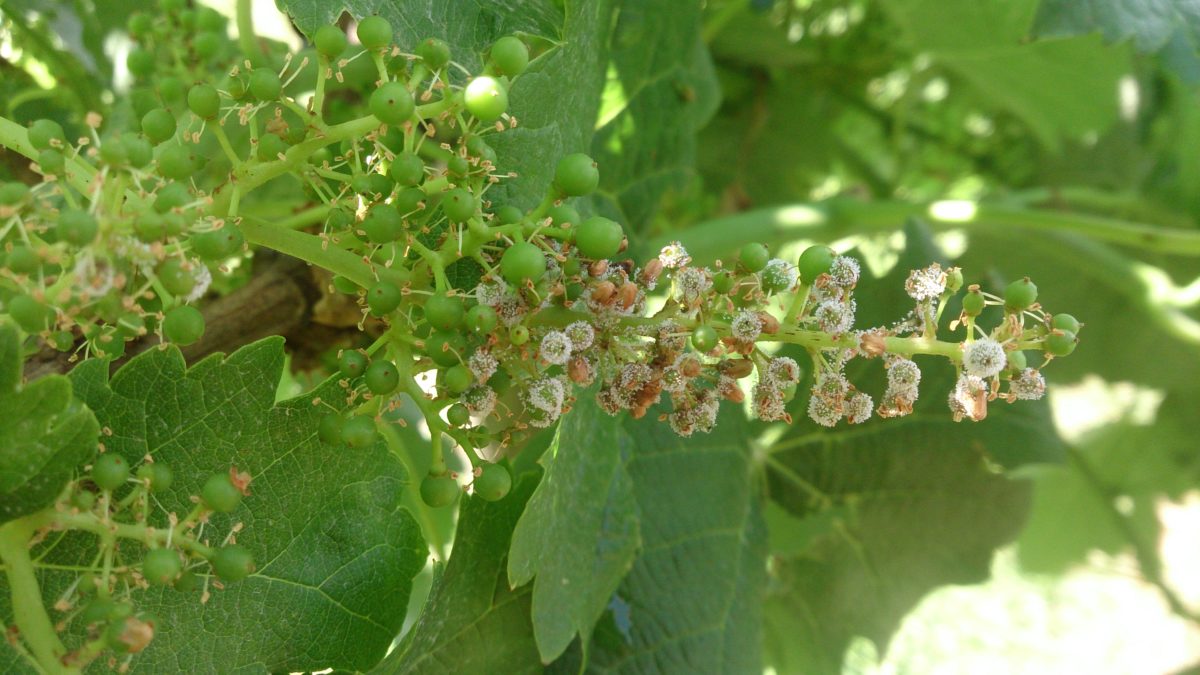
The wine grape industry in Georgia is on the rise. While vineyards have been present in Georgia for the past four decades, the industry has been gaining significant traction in the last 10 to 15 years. Since the industry is relatively new, it is still fragile and some of the challenges, like downy mildew resistance, are unpredictable.
Downy mildew is a devastating disease that can impact several crops. According to Phil Brannen, a plant pathologist with the University of Georgia, grapevine downy mildew (Plasmopara viticola) continues to be a major pathogen for growers. “It (downy mildew) actually drives a lot of our spray programs on grapes,” Brannen says.
European grape cultivars, which are grown in north Georgia, are very susceptible to downy mildew. Brannen says he has problems with those cultivars consistently. In south Georgia, producers grow hybrid cultivars, some of which Brannen says are also pretty susceptible to the disease.
PLANT IMPACTS
Once infected, downy mildew can impact multiple parts of the plant throughout the
season. In the early season, growers may see it directly impacting the berries
or leaves. On the tops of the leaves, oily spots will appear, and spots will eventually
develop white, fluffy growth on the underside of the leaves opposite the oil
spots. On the fruit, up to about pea size, Brannen says the infection will show
its face as a white downy growth that shoots out of the individual berries.
Downy mildew can wipe out production if not managed properly. According to Brannen, the pathogen can impact the leaves and reduce photosynthesis, which will affect the ripening of the grapes and produce a poor product. Downy mildew can also defoliate the plants early, which can result in winter injury.
Brannen says growers continue to manage downy mildew with fungicides. “We have to spray pretty much season-long in order to manage downy mildew,” he explains. “It’s a seasonal disease that comes in early and stays. We also spray after harvest because we still have to protect the leaves.” Brannen adds that the use of fungicides has worked incredibly well, which is why growers continue to use them.
However, downy mildew is now starting to show resistance to QoI fungicides, a large class of fungicides used by many grape growers.
RESISTANCE RESEARCH
Sarah Campbell, a graduate research assistant working with Brannen, has been
studying this resistance to examine how serious it is and to develop
recommendations for growers.

Campbell says that resistance is a well-known phenomenon that occurs in all kinds of fungal pathogens worldwide. “Fungicide resistance is characterized by a heritable loss of sensitivity to a particular fungicide,” she explains. “It can either be a total loss of sensitivity or a gradual loss.”
QoI resistance has been a tough challenge for growers to grapple with since it has been a favorite fungicide class in the industry. So, Campbell and Brannen set out to discover if that resistance truly was occurring in Georgia and to what lengths.
According to Campbell, they conducted a field trial last summer at three different locations in north Georgia. Two were commercial vineyards and one was a research vineyard in Blairsville.
At the research vineyard, an untreated control was compared to multiple fungicides that should have activity against downy mildew. Eleven different treatments were applied, with two containing different QoI fungicides. Applications were made five times on an approximate two-week interval.
After conducting the research, QoI resistance was found to be alive and well in Georgia. “What we found was the QoI fungicides did not show any statistical difference from our untreated vines in terms of severity,” Campbell explains.
Brannen says that these results were mildly expected based on the resistance patterns in other states. “We just didn’t know how bad it was,” he explains. “What we’ve determined is there’s no reason for most growers to even consider spraying those fungicides anymore.”
However, that poses a major issue considering the popularity of this fungicide class. “(It) puts a lot of pressure on our remaining fungicides. That’s a big problem we’re running into,” Brannen says. “That’s maybe going to be the case for the entire Southeast or East Coast.”
GROWER ADVICE
Moving forward, it is crucial for growers to do what they can to avoid resistance and keep downy mildew under control. Campbell says one of the best resistance management tools is to use tank mixes. Also, rotating classes of fungicides and being sure to follow the fungicide label are good practices to keep in mind. “A lot of our growers in Georgia are already pretty good about that,” she concludes.
This article was featured in the February issue of VSCNews magazine. To receive future issues of VSCNews magazine, click here.
Share this Post










